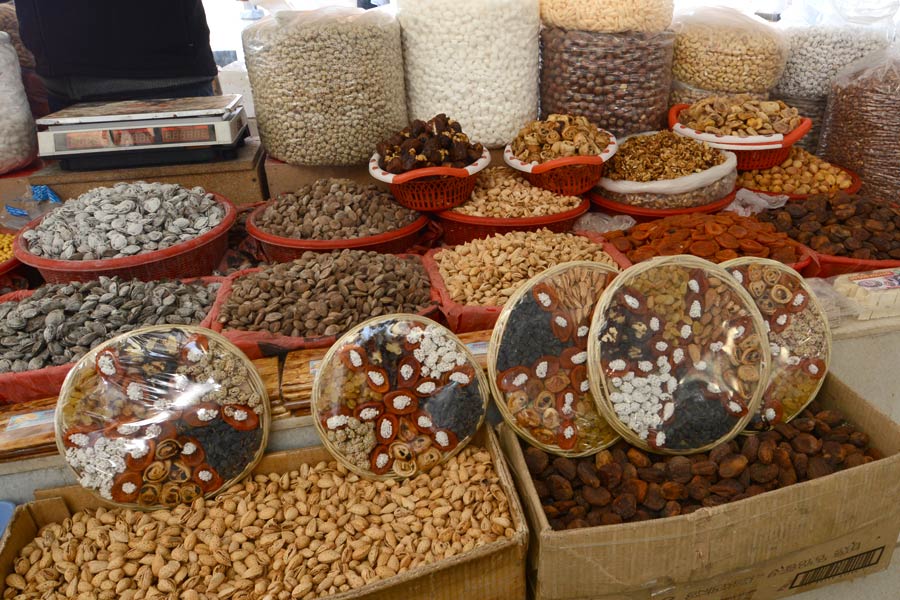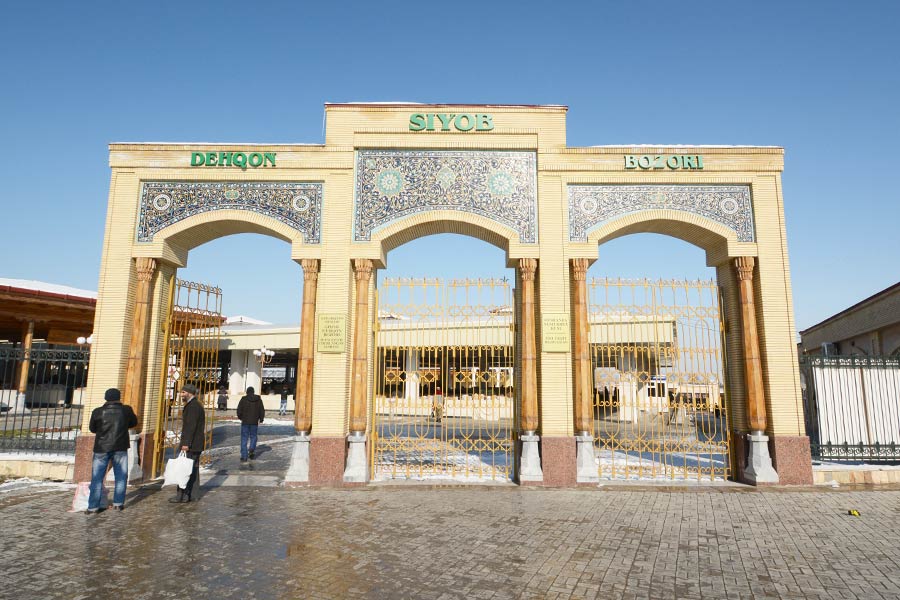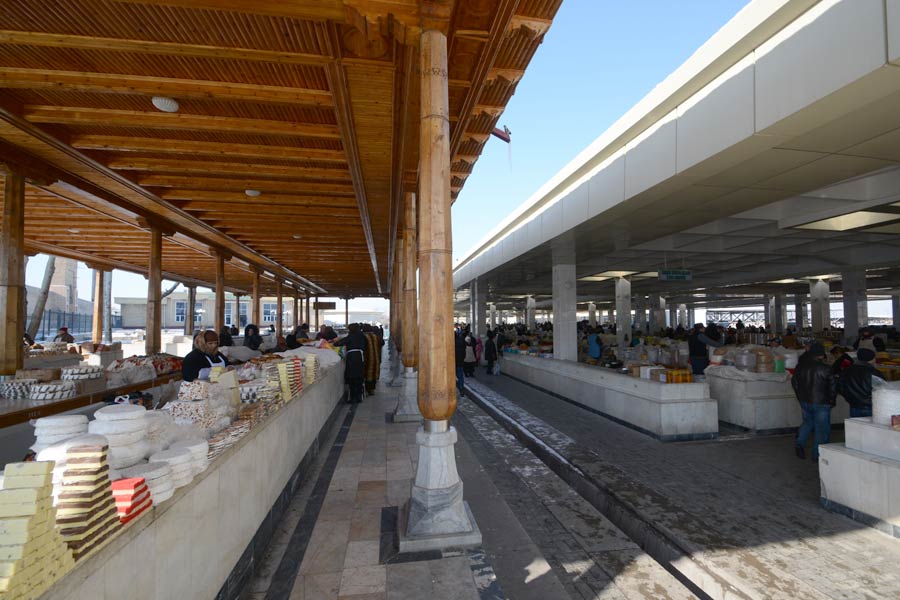Siab Bazaar
Currently, the attitude towards Siab Bazaar has not changed — it is still in demand, it is used to be visited not only by visiting tourists, but also by local residents, among whom the popularity of the market has not faded over the years. It is worth going there to get to know the natural resources of Uzbekistan and its incredible hardworking people, because the abundance of goods made by real craftsmen will be a direct proof of this.
The Samarkand Bazaar is also known as the main bazaar of Tashkent, Chorsu. For centuries, these two bazaars have gathered merchants and buyers from all over Central Asia, and the fame of trade there has spread far beyond its borders. This is because Samarkand has been the capital of the region more than once, and it was the capital's bazaars that were the centers of the most active trade and attracted many people. Merchants came here at any time of the year, and the stalls were bursting with a bright variety of goods.
It is only necessary to walk past the Registan architectural ensemble quite a bit, to the Bibi Khanim mosque, in order to find yourself at the three-fold high arch — the entrance to the Siab bazaar. At the top, the arch is decorated with mosaics in blue and blue tones. As soon as you take a step, you will find yourself in a wonderful and original world of sounds, a mixture of smells and the brightest colors. To see the oriental bazaar in all its glory, it is recommended to visit here in the summer. Then you will be whirled by the abundance of all kinds of fruits, berries, vegetables and herbs. But it's worth paying tribute — at other times of the year, the choice here is no less.
A big plus of the bazaar is the covered pavilions. They ensure a comfortable stay in the bazaar in any weather. Also, their presence gathers all the noise and hum of the bazaar under the roof, which makes the place unique.
The goods on the rows are not mixed up. There is a conditional division into groups of goods according to the shopping malls of the bazaar. Vegetables are sold separately, there is everything from potatoes and carrots to eggplants. Would you like some fruit? Go a little further, there are fruit aisles next to the vegetable aisles. And what rich rows of dried fruits! Sellers laid out local and imported products, oriental sweets, among which unusual delicacies — salted and dried apricot seeds baked in ashes. There are also familiar treats: kozinaki, peanuts in fudge, and more.
You will definitely take a look, because it is simply impossible to pass by such alluring aromas, on the rows with all kinds of spices. What's not here! Sesame, barberry, turmeric, saffron, all kinds of pepper, cloves and sweet cinnamon. It's unlikely to leave empty-handed, you'll want to take a piece of the fragrant east with you.
And then there are the cereals, arranged in such a way that you feel as if you are in the desert. Rice and wheat, millet, various grains — they rise above the counters in "dunes", striking with their diversity.
Of course, as in any other place with such a concentration of people, Siab Bazaar has a separate place where you can have a snack with national laghman, samsa, shurpa and delicious-smelling barbecue. All this is prepared directly at the point of sale, using wood in the traditional way. While enjoying the aromas and a delicious meal, drink warm green tea and feel the real Oriental taste. In the spring period, when the celebration of Navruz covers the country, you can try the traditional sumalak dish at the Siab bazaar by buying a draught portion. For fans, there are also the usual European snacks.
How else can you get to know the local flavor? Take a look at the folk crafts of Siab Bazaar! The painstaking work will not leave anyone indifferent. In addition, the craftsmen produce their masterpieces right behind the counter. You will be able to see firsthand the process of creating almost all the goods: copper, carving, forging and engraving.
The popularity of Samarkand, among other things, increased due to tortillas. There are about 17 recipes for these amazing tortillas. Each of the recipes is unique in that it has been perfected for decades, until it became possible to make the perfect flatbread that would retain its original appearance and taste for a long time. The need to keep bread fresh for a long time was one of the initial tasks during the time of the nomads. Now a special kind of tortillas has been invented for tourists. They are baked with a pattern, ornament or inscription as a keepsake.





















